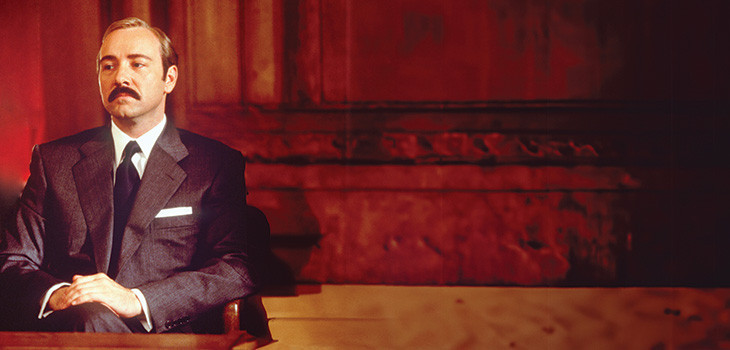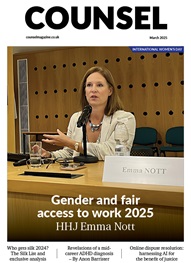*/

Review by David Langwallner
This year marks the 30th anniversary of John Berendt’s Midnight in the Garden of Good and Evil: A Savannah Story, a non-fiction novel in the Southern Gothic tradition where the dominant themes are race, class divisions, religion, insanity – oh, and murder.
The book follows the real-life story of Jim Williams, a successful art and antiques dealer who was put on trial four times for the murder of his lover/employee, Danny Hanson. Berendt takes some liberties with the sequence of events and characters and, travelogue style, explores the place and the people of Savannah, Georgia and their eccentricities. The book was a near-instant best-seller, Pulitzer Prize (general nonfiction) finalist as well as generating much tourism in the area.
Savannah is a place of contradictions; home to some of the oldest courtly buildings in America ... and voodoo. The title refers to the witching hour near midnight where folk magic is replaced by evil magic. Savannah with much old wealth of puritan stock reacted ambivalently to Williams with his parvenu wealth, unconventional lifestyle and interest in alchemy and the spiritual world.
It also seized the interest of Clint Eastwood who turned the novel into a 1997 film with a screenplay by John Lee Hancock. The film version features Kevin Spacey (pictured above) as Williams and John Cusack as his journalist house guest John Kelso (representing Berendt). Kelso is writing a piece on Williams’ legendary Christmas parties when the shooting occurs and stays on to cover the murder trial. The victim, renamed as Billy Hanson in the film, is played by a young Jude Law.
One of Williams’ real-life lawyers, Sonny Seiler (played by Jack Thompson in the film) plays the part of the judge. (Seiler reportedly wanted the role of jury foreperson ‘because that would quietly stick my tongue out at a lot of people’ but was convinced he would be better suited as the judge.)
Lawyers, or rather the legal system, are not terribly favourably represented in Eastwood’s version. The film is also unsettling on prosecutorial zeal as well as flawed police procedure and features voodoo incantations by a priestess hired by Williams that he be acquitted. (A thought has occurred to me often that advocacy can appear a non-linear dark art itself.)
Now Williams was put on trial four times over five years and was eventually acquitted. The argument was self-defence and in effect proportionate force as he claimed that after an argument he had been attacked with a gun and merely responded. Of course, it raises the question of self-defence and the proportionate use of force not least in our increasingly vigilante age.
It also brings to the fore the issue of pretrial publicity. How can you get a fair trial if everyone knows who you are? Whatever they think of you. All juries were hung until the final one when the trial was moved out of Savannah. In the local juries everyone knew him, many wanted to hang him (literally or metaphorically), and many wanted to hang out with him. Prejudices and prejudgment. Williams died shortly after the fourth trial from the stress. Luckily at most and only exceptionally in the UK is there a second retrial.
Lawyers should, of course, and largely do in this jurisdiction, police carefully the distinction between morality and legality. American sentiments in that respect should not be followed. SCOTUS, as Lord Sumption has recently argued, are no longer in any meaningful sense judges but enforcers of dogma: ‘The United States has never stood in greater need of impartial constitutional arbiters in its highest court, and has never been further from getting them,’ he wrote in an article for Prospect Magazine. And, of course, all charges against President Elect Trump are now dropped. Thus, all lawyers worldwide be conscious of the witching hour and Midnight in the Garden of Good and Evil.

This year marks the 30th anniversary of John Berendt’s Midnight in the Garden of Good and Evil: A Savannah Story, a non-fiction novel in the Southern Gothic tradition where the dominant themes are race, class divisions, religion, insanity – oh, and murder.
The book follows the real-life story of Jim Williams, a successful art and antiques dealer who was put on trial four times for the murder of his lover/employee, Danny Hanson. Berendt takes some liberties with the sequence of events and characters and, travelogue style, explores the place and the people of Savannah, Georgia and their eccentricities. The book was a near-instant best-seller, Pulitzer Prize (general nonfiction) finalist as well as generating much tourism in the area.
Savannah is a place of contradictions; home to some of the oldest courtly buildings in America ... and voodoo. The title refers to the witching hour near midnight where folk magic is replaced by evil magic. Savannah with much old wealth of puritan stock reacted ambivalently to Williams with his parvenu wealth, unconventional lifestyle and interest in alchemy and the spiritual world.
It also seized the interest of Clint Eastwood who turned the novel into a 1997 film with a screenplay by John Lee Hancock. The film version features Kevin Spacey (pictured above) as Williams and John Cusack as his journalist house guest John Kelso (representing Berendt). Kelso is writing a piece on Williams’ legendary Christmas parties when the shooting occurs and stays on to cover the murder trial. The victim, renamed as Billy Hanson in the film, is played by a young Jude Law.
One of Williams’ real-life lawyers, Sonny Seiler (played by Jack Thompson in the film) plays the part of the judge. (Seiler reportedly wanted the role of jury foreperson ‘because that would quietly stick my tongue out at a lot of people’ but was convinced he would be better suited as the judge.)
Lawyers, or rather the legal system, are not terribly favourably represented in Eastwood’s version. The film is also unsettling on prosecutorial zeal as well as flawed police procedure and features voodoo incantations by a priestess hired by Williams that he be acquitted. (A thought has occurred to me often that advocacy can appear a non-linear dark art itself.)
Now Williams was put on trial four times over five years and was eventually acquitted. The argument was self-defence and in effect proportionate force as he claimed that after an argument he had been attacked with a gun and merely responded. Of course, it raises the question of self-defence and the proportionate use of force not least in our increasingly vigilante age.
It also brings to the fore the issue of pretrial publicity. How can you get a fair trial if everyone knows who you are? Whatever they think of you. All juries were hung until the final one when the trial was moved out of Savannah. In the local juries everyone knew him, many wanted to hang him (literally or metaphorically), and many wanted to hang out with him. Prejudices and prejudgment. Williams died shortly after the fourth trial from the stress. Luckily at most and only exceptionally in the UK is there a second retrial.
Lawyers should, of course, and largely do in this jurisdiction, police carefully the distinction between morality and legality. American sentiments in that respect should not be followed. SCOTUS, as Lord Sumption has recently argued, are no longer in any meaningful sense judges but enforcers of dogma: ‘The United States has never stood in greater need of impartial constitutional arbiters in its highest court, and has never been further from getting them,’ he wrote in an article for Prospect Magazine. And, of course, all charges against President Elect Trump are now dropped. Thus, all lawyers worldwide be conscious of the witching hour and Midnight in the Garden of Good and Evil.
Review by David Langwallner


Now is the time to tackle inappropriate behaviour at the Bar as well as extend our reach and collaboration with organisations and individuals at home and abroad
To mark International Women’s Day, Louise Crush of Westgate Wealth Management looks at how financial planning can help bridge the gap
Casey Randall of AlphaBiolabs answers some of the most common questions regarding relationship DNA testing for court
Leading drug, alcohol and DNA testing laboratory AlphaBiolabs has made a £500 donation to Beatson Cancer Charity in Glasgow as part of its Giving Back campaign
Girls Human Rights Festival 2025: a global gathering for change
Exclusive Q&A with Henry Dannell
Marking Neurodiversity Week 2025, an anonymous barrister shares the revelations and emotions from a mid-career diagnosis with a view to encouraging others to find out more
Patrick Green KC talks about the landmark Post Office Group litigation and his driving principles for life and practice. Interview by Anthony Inglese CB
Desiree Artesi meets Malcolm Bishop KC, the Lord Chief Justice of Tonga, who talks about his new role in the South Pacific and reflects on his career
Sir Nicholas Mostyn, former High Court judge, on starting a hit podcast with fellow ‘Parkies’ after the shock of his diagnosis
Exclusive QA with Henry Dannell